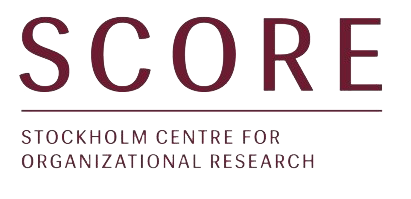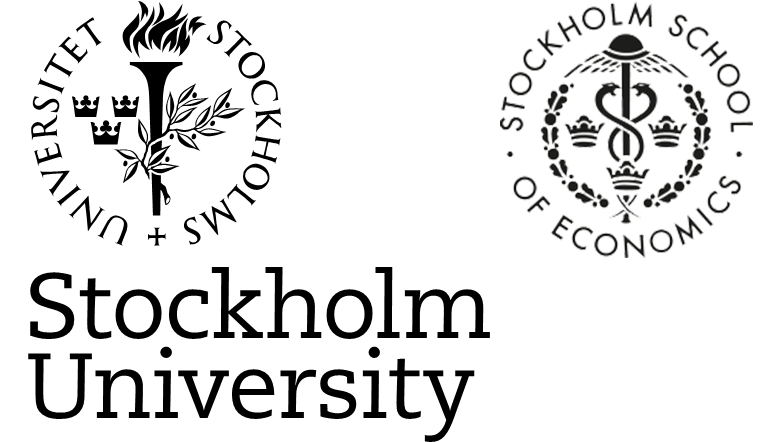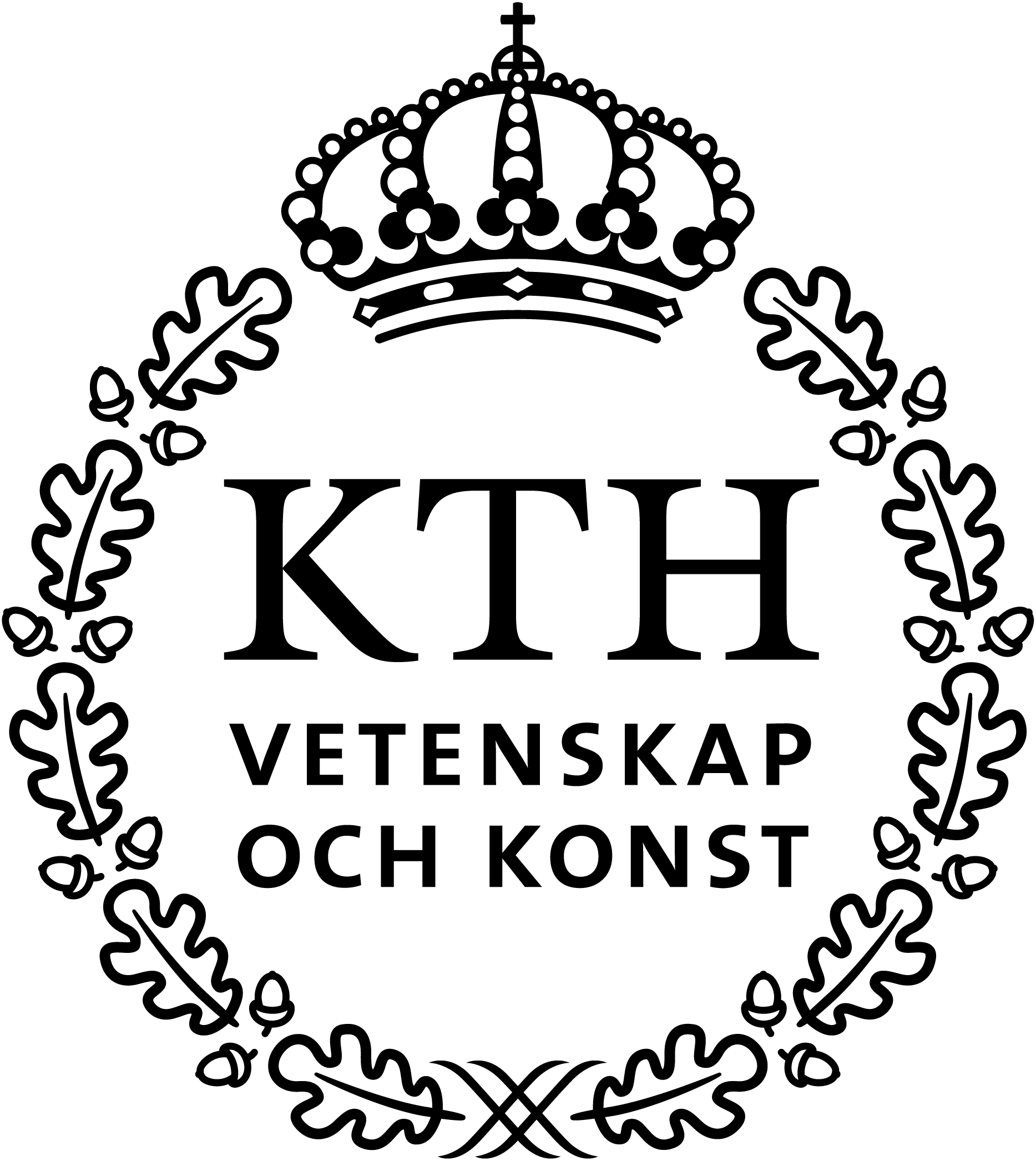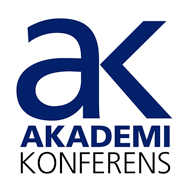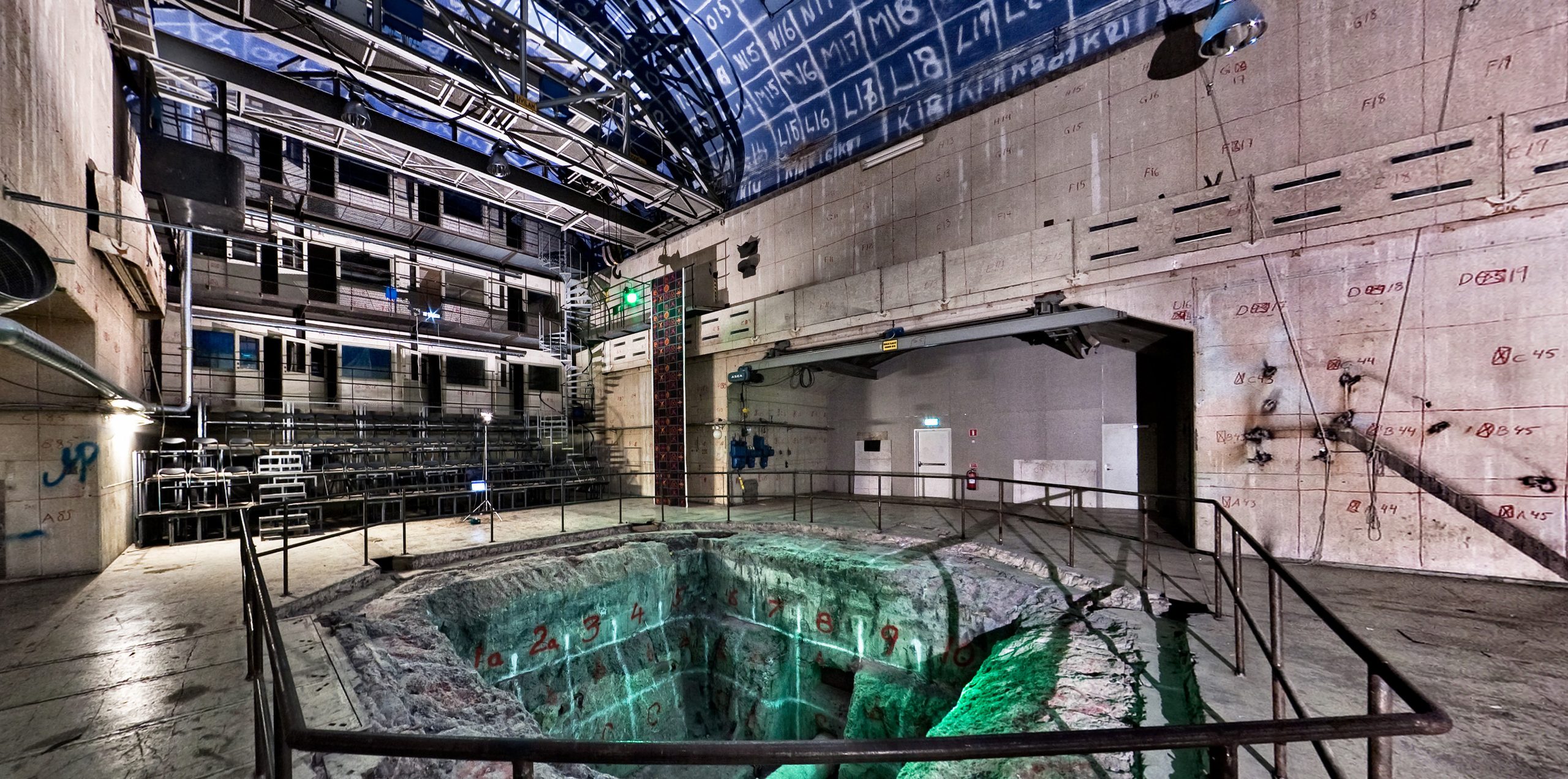
The KTH Reactor Hall. Photo: Jann Lipka
7th Nordic STS Conference
STS in and out of the Laboratory
June 11-13, 2025, Stockholm
PhD-student pre-conference 10 June: Method labs
Artistic and Exploratory Practices sessions
Overview of Artistic and Exploratory Practices sessions. Please press the plus sign to read more about the sessions.
For session 3-8 there is a limitation in the number of participants. Click on the link to register:
https://docs.google.com/forms/d/e/1FAIpQLSf8PVqiAnN1fmLCTN_kFYPzb0hGV9G065JSyms1kyMNNJQsJA/viewform
1. Accelerator and the ongoing exhibition Flare-Up by Goldin+Senneby
Accelerator is Stockholm University’s exhibition space, where art, science, and societal issues meet. The mission of Accelerator is to actively engage with society, producing exhibitions that present both international and Swedish contemporary art. Accelerator’s programme is driven by an ambition to contribute towards a transparent and empathetic society by creating opportunities for art to spark discussions and interdisciplinary dialogue.
Visiting address: Stockholm University Campus, Frescativägen 26A
Flare-Up by Goldin+Senneby
Open until 15 June
Accelerator presents Flare-Up, a solo exhibition by Stockholm-based artist duo Goldin+Senneby. The exhibition focuses on issues of autoimmunity, accessibility, and ecology. Large-scale installations, paintings, drawings and sculptures are presented across three rooms.
The title of the exhibition, Flare-Up, is based on the artists’ experience of living with multiple sclerosis (MS). When Jakob Senneby had his first flare-ups, doctors told him he had an ‘overactive immune system’ and a ‘body at war with itself’. While he could never quite identify with such metaphors, they fit all the better with the immunosuppressive drugs offered by the pharmaceutical industry. These lucrative treatments can reduce the dramatic flare-ups but do little to slow the gradual deterioration over time. Flare-Up also alludes to the volatile and flammable nature of pine resin. Induced by injuries and infestations, resin acts as the tree’s immune system.
2. THESE RELATIONS ARE FOREVER
Artist: Jemma Woolmore
In collaboration with Caterina Cacciatori (1), Sandra Coecke (1), Irene Guerrero(1), Saskia Vermeylen (2).
1 European Commission, Joint Research Centre (JRC), Ispra Italy
2 Strathclyde University, Glasgow
Video installation, 36min.
In this video installation, Endocrine Disrupting Chemicals (EDC’s) – and their increasingly frequent and lasting presence within our bodies and lives, via food, soil, and water – are the thematic thread through the scientific practices of four women researchers. The work brings together agricultural policy, toxicology, water quality research, environmental law, and art around the common theme of chemical pollution. The four researchers are presented as Wise Women, holders of knowledge and protectors of life; their scientific practices are reframed as relations of care and ritual becomes a vehicle to make connections across bodies, scales, cycles and scientific disciplines. In these rituals, methods from dominant scientific practices are woven together with spoken text, movement and symbolic locations and objects. We use ritual as a tool to create a moment outside of everyday life, to slow down, be present and show gratitude and to acknowledge the alterations chemicals make to bodies and ecosystem.
Time: 13:30 – 16:00
Location: M110 (Projekthallen), Brinellvägen 23 (https://www.kth.se/places/room/id/414bf671-96b7-43f6-b06f-2c17f86b9ef9?l=en)
3. Exploring forest bathing as a method to broaden forest restoration perspectives
Forest bathing (shinrin yoku) is a Japanese ecotherapy practice known to restore physical and mental well-being in practitioners around the world. It is also a part of more complex nature-based interventions that can enhance pro-environmental behaviour among participants (Leao et al. 2025) and open up for broader values of and engagements with nature (Marini Govigli & Bruzzese 2023). During this workshop we will explore how forest bathing can be integrated with policy labs to stimulate new ways of thinking about and discussing forest management and restoration in the polarized forest debate.
In this 2 hour long workshop, we first invite participants to a forest bathing experience on the conference grounds with a trained forest bathing guide along with the presenters. The experience consists of a series of invitations that encourage participants to sensory engagement with surrounding nature, and ends with a tea circle. During tea we invite participants to a conversation on how we might integrate this methodology with other methods and utilise it in policy labs with forestry actors to stimulate forest restoration and governance dialogue.
For the participants:
Since we will sit still on the ground or walk only very slowly, participants should
– wear warm clothing and even in warm weather long sleeves and trousers and closed shoes are recommended as a barrier to tick and mosquito bites.
– Bringing mosquito repellent is recommended.
– Bring rain gear if rain is forecasted.
– Block the full two hours to be part of this experience and please meet us on time at the meeting point.
Sitting pads will be provided
Maximum number of participants: 15
Time: 11:00 – 13:00
Meeting place: Registration area in Aula Magna
Organizers
Judith Lundberg-Felten judith.lundberg-felten@slu.se (will guide the walk)
Carolyn Faithfull carolyn.faithfull@slu.se
Hedvig Nenzen hedvig.nenzen@slu.se
Patrik Oskarsson patrik.oskarsson@slu.se
Minh-Xuan Truong minh.xuan.truong@slu.se
References
Leao, E. R., Savieto, R. M., Borba, G. B., da Silva Victor, E., Bomfim, S. B., Hingst-Zaher, E., et al. (2025) Efficacy of a multicomponent nature-based intervention on well-being and environmental engagement: A randomized clinical trial. Environ Int, 196, 109286.
Marini Govigli, V., & Bruzzese, S. (2023). Assessing the emotional and spiritual dimension of forests: A review of existing participatory methods. Forest Policy and Economics, 153, 102990
4. Arboreal Soundscapes
This soundwalk builds on several years of my artistic research into diverse ways of connecting with arboreal and vegetal worlds through listening techniques. As we walk through the forest using various listening and recording technologies, we witness the soundscapes of trees, plants, and their multi-species ecosystems—sonic dimensions that normally remain imperceptible. Additionally, local ecosystems become gateways to more distant arboreal soundscapes that I have studied over the past several years, recordings of which I mix into different chapters of this evolving composition. For this purpose, I use a specially designed kit for immersive soundscape transmission, comprising a field recorder, a microcomputer, and a range of specialized microphones, including hydrophones, contact microphones, and geophones. Participants are equipped with receivers and headphones, allowing them to listen to this hybrid soundscape as we walk through the forest. The soundwalk concludes with a gathering and discussion on the benefits, challenges, ethical implications, and potential responsibilities that arise from our act of eavesdropping into diverse arboreal realms.
For some more information about my research and similar soundwalks, please consider checking:
https://arboretum.harvard.edu/stories/arboreal-soundscapes/ and https://arowoftrees.co.uk/article/jacek-smolicki-arboreal-sonorities/
The soundwalk would be limited to 25 people and I would provide all necessary equipment.
Time: 09:00 – 13:00
Meeting place: Outside “The Coffice” (near the Q-building). https://maps.app.goo.gl/z2rLjn6ETYfYcjkJA
Jacek’s Bio:
Jacek Smolicki, PhD, is an interdisciplinary artist, researcher, designer and educator.
His work explores the critical, existential and technological dimensions of listening, recording and archiving in human and more-than-human contexts. Manifesting as soundwalks, soundscape compositions, experimental archives, and installations, his work has been presented internationally, including at Ars Electronica, Sonorities, and In-Sonora. He has, among other subjects, engaged in artistic work and written about the Canadian Pacific Coast soundscapes, tallest wooden radio mast in Europe, sounds of trees, alternative archives, ethics of field recording, and media archaeology of artificial voices. His edited book Soundwalking: Through Time, Space and Technologies was published by Routledge in 2023. Between 2020 and 2023, he was a Swedish Research Council postdoc grantee, and in 2022–23, he was a Fulbright visiting scholar at Harvard. In 2019, he co-founded and ever since co-directed the Walking Festival of Sound.
5. Shared Walks / Futures -Walkshop
How do we feel about the future in times of crisis and continuous transition? What future(s) can we imagine when the world’s order is in flux? Shared Walks / Futures is an art-science collaboration that engages with these questions by creating an embodied, participatory experience for reflecting on futures in the context of environmental and societal change. It takes the participants out of the labaratory and explores how walking can be a method of artistic inquiry that fosters collective reflection on the possibility, desirability, openness and plurality of futures. Through a walkshop—a participatory walk followed by a roundtable reflection, participants explore future imaginaries through observation and creative collection. What to expect: We invite participants to follow a walking prompt provided to them and their randomly selected walking partner, and return after an hour of walking with a photo or an object to facilitate the group discussion at the reflection session. (No preparation is necessary, but remember to wear comfy shoes and weatherproof clothing, and please be at the meeting point in time.)
For the participants:
- Weatherproof clothing and comfy shoes (for one hour outdoors walk)
- Grab your lunch and meet us at the meeting point
- Blocking the full two and a half-hours for this session in your agenda and being at the starting point on time.
- No predefined paths or are necessary; participants are encouraged to navigate freely.
- Basic materials (e.g., notepads, pens) will be provided, though participants may also use personal devices.
Time: 13:15 – 16:00
Meeting place: Outside “The Coffice” (near the Q-building). https://maps.app.goo.gl/z2rLjn6ETYfYcjkJA
Organisers:
Ayşem Mert, Department of Political Science, Stockholm University (aysem.mert@statsvet.su.se)
Tatiana Sokolova, Department of Environment, Development and Sustainability Studies, Södertörn University (tatiana.sokolova@sh.se)
6. Protocols for Knowing Microbes Otherwise
This outdoor session engages with the forest as a site for knowing microbes outside of laboratory settings. Microbes are everywhere, always, and yet dominant understandings of microbes have been confined to technoscientific and visually-mediated ways of knowing them. The unifying theme of this session is to use more-than-visual means for knowing microbes, with specific attention to the sense of sound, scent, and proprioception. As scholars based outside of laboratory contexts, we have been developing microbial methods in the form of exploratory protocols. Some of these protocols have been trialled and iterated upon through collaborations with artists, artistic researchers, and practitioners.
The session is dually meant to engage the wider STS community on discussions about more-than-laboratory knowledge production, as much as they are intended to help us hone these methods for future study. Planned activities include:
- Microbial Sounding, a protocol designed to reflect on the possibilities offered by sound to speculate about sociality and microbial presence in more-than-human ecologies
- Holobiont Walk, a protocol designed to attune to microbes through multiple senses (especially proprioception) in a guided walk through the forest
With a heads up to participants to bring all-weather attire and dress appropriately, both activities can take place regardless of rain. Participants will be informally asked for feedback (i.e., no records or identifiers).
Time: 13:30- 15:30
Meeting place: Outside “The Coffice” (near the Q-building). https://maps.app.goo.gl/z2rLjn6ETYfYcjkJA
Session organizers and emails:
Maya Hey, maya.hey@helsinki.fi
Jose Cañada, jose.a.canada@helsinki.fi
Aliisa Talja, aliisa.talja@posteo.fi
7. RE:ACT…OR? – A Participatory Photo Tour Through The Reactor Hall
The Artist: Hannah Romano
The Exhibition
What happens to places, structures, and objects that have become obsolete? Their material components remain—slowly reclaimed by nature. These images peer into a future shaped by climate catastrophe, capturing relics of a world without humans in a chernobylesque manner. Yet these are not fictional scenes; they document real, disused spaces that lie dormant all around us.
This dialogue between abandonment and adaptation invites viewers to recognize the hidden potential of unused spaces and to engage with them creatively. Within the constraints of what already exists, new ways of thinking, creating, and inhabiting space can emerge.
The exhibition is partially installed in the Aula Magna and Reactor Hall. On Thursday afternoon, the artist will be present to contextualize the works and share stories of exploration and reactivation.
The Workshop
For those wishing to dive deeper, the workshop invites participants to become not just observers, but co-creators.
The session begins with an artist-led tour introducing photography as both method and metaphor—reframing what we consider valuable, visible, or meaningful. The aesthetic approach tries to capture not just what we see, but how we see it. The participants are then invited to explore the Reactor Hall and beyond, searching for traces often overlooked. This embodied, site-specific activity fosters new ways of seeing and connecting with the built environment. It creates space to wander and to wonder.
No experience is needed—just curiosity and a mobile phone or camera.
Max. 25 participants.
Thursday, 16:00–17:30
8. A Rubber Boot Session in Urban Naturecultures: Sensory Engagements with a Disrupted Wetland
This workshop – a rubber boot session – explores methods for sensing and studying morethan-human entanglements in disrupted ecologies. Rubber boot methods draw on traditional fieldwork’s emphasis on empirically grounded research attuned to the situated, lived and affective dimensions of a place, focusing particularly on more-than-human relations in a landscape (Swanson, 2022). In response to the conference’s invitation to reimagine the spaces where knowledge is created, shared, and transformed, the workshop proposes an experimental and interactive format that relocates outside of the laboratory and into the urban wetland of Uggelviken, situated between the campuses of KTH and Stockholm University. The session aims to explore how rubber boot methods can foster embodied, affective, and sensory engagements with mundane, yet complex, urban naturecultures in times of environmental and climatic crisis.
Uggleviken, like many urban wetlands, has been shaped by hydraulic engineering, modernist planning efforts to separate land from water and simplifications of their complex and entangled life forms. This framing reflects a long-standing Western dualism that perceives humans as separate from their environments—an epistemological stance that philosopher David Abram (2017) identifies as a perceptual problem rooted in the absence of attentiveness to the relational, more-than-human world. In response, this workshop engages sensory methods to cultivate deeper attentiveness to, and sensory reciprocity with, disrupted ecologies. It engages questions such as: how can ethnographic fieldwork, and other common STS-methodologies, be retooled to sense and study natureculture entanglements and the epistemic challenges they pose? How can such methodologies be performed in ways that also make room for critical self-reflexivity regarding the normative assumptions or relationships that they perform?
We –scholars from anthropology, archaeology, artistic research, human ecology, conservation/heritage studies, and urban studies – propose transdisciplinary agnosticism (Holmstedt, forthcoming) as a point of departure to foreground collective sense-making where not-knowing is embraced as an epistemic condition. Instead of seeking mastery over a research site, we use this session to collectively explore ways of learning with and through multispecies ecologies. We invite joining participants to collectively explore methods for surveying natureculture landscapes, moving beyond the prioritizing of the visual and changing the landscape gaze for the invocation of the sensous. This is done through methods drawing on tactile experiences, deep listening and slow walking as ways of attuning to the site’s multispecies and transtemporal materialising relations. The session will be concluded with a reflexive writing exercise. By tuning into the material, temporal, and affective registers of Uggleviken, this session creates space for storying the relations of the site and sharing experience-based reflections on how to study co-species entanglements in disrupted ecologies.
Duration: 2,5 hours. Participants are encouraged to wear shoes enduring watery grounds.
Time: 09:00 – 11:30
Meeting place: Ugglevikskällan. https://maps.app.goo.gl/9JeC2TXEeQj5sm2s7
References
Abram, D. (2017). The Spell of the Sensuous. Perceptions and Language in a More-ThanHuman World. New York: Vintage Books.
Holmstedt, J. (Forthcoming). Soil Agnosticism. In Krzywozynska, A. & Toland, A. (Eds) Language of Soil – a handbook for transdisciplinary research.
Swanson, H. A. (2022). Rubber Boots Methods beyond the Field: Transformative Possibilities and Institutional Barriers in University Contexts. In N. Bubandt, A. O. Andersen, & R. Cypher (Eds.), Rubber Boots Methods for the Anthropocene (pp. 348-370). University of Minnesota Press.
Organisers:
Christina Fredengren, christina.fredengren@arklab.su.seu
Emma Holmberg, emmho@kth.se
Janna Holmstedt, janna.holmstedt@shm.se
Jenny Lindblad, jenny.lindblad@abe.kth.se
Sofia Wiberg, sofia.wiberg@abe.kth.se
Contact us
Conference Secretariat: Academic Conferences
Phone: +46 18 67 10 34 or +46 18 67 10 03
Conference Secretariat email:
nordic-sts2025@akademikonferens.se
Open Panels and Abstract Secretariat:
nordic-sts2025@score.su.se
Important dates
1 October 2024 - Call for Open Panels
10 December 2024 – Deadline submission Open Panels
15 January 2025 - Call for abstracts open
27 March 2025 - Registration open
1 April 2025 - Confirmation of abstract acceptance
30 April 2025 - Deadline early bird registration
15 May 2025 - Deadline abstract authors to register
11-13 June 2025 - Conference dates
